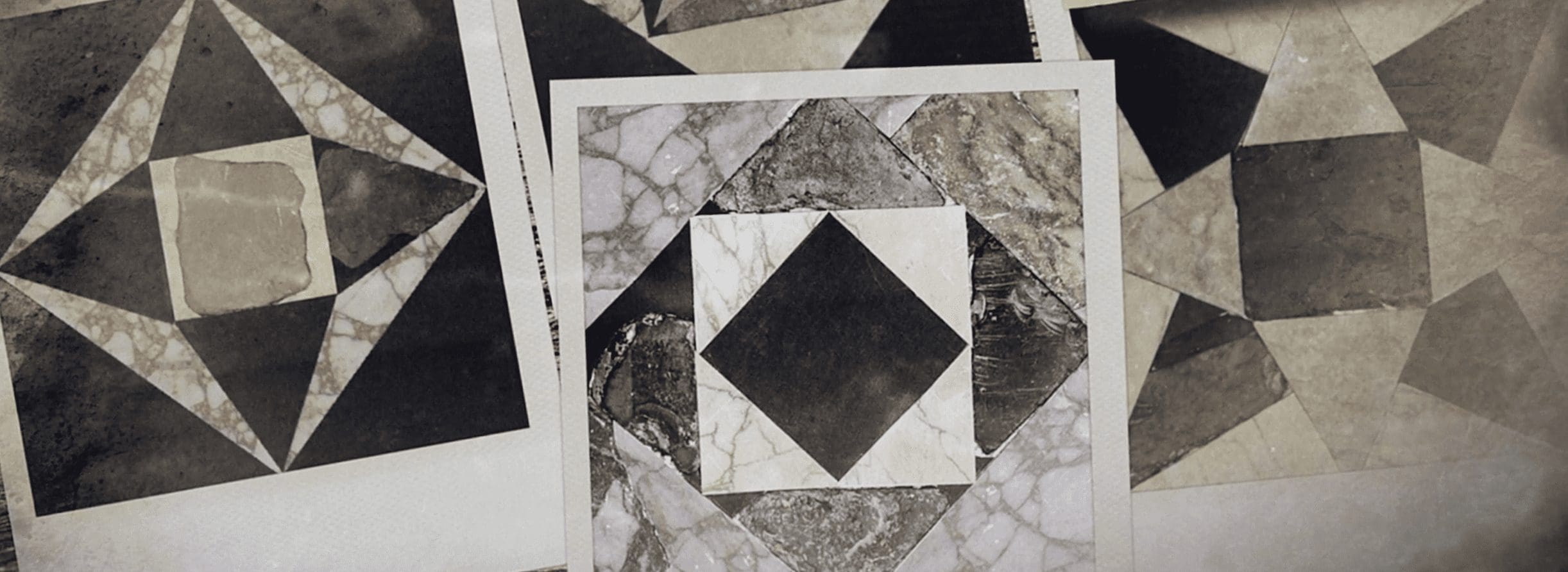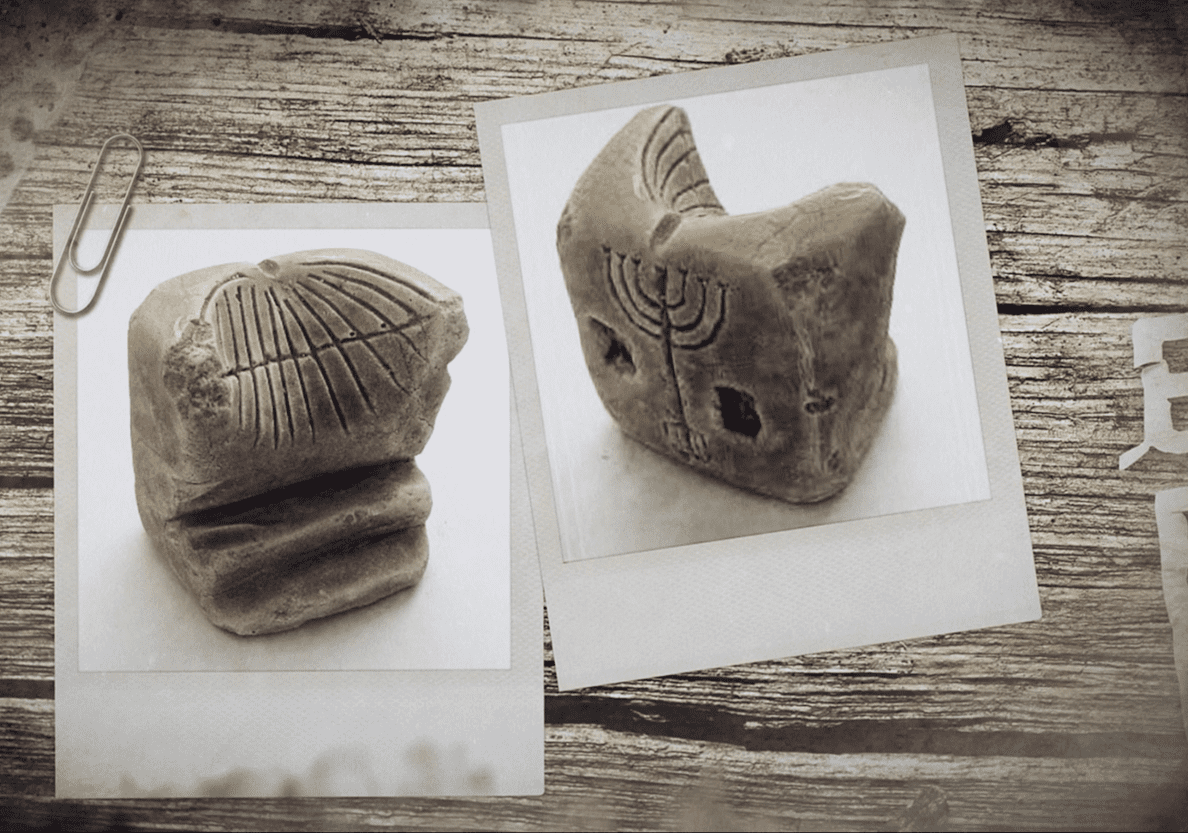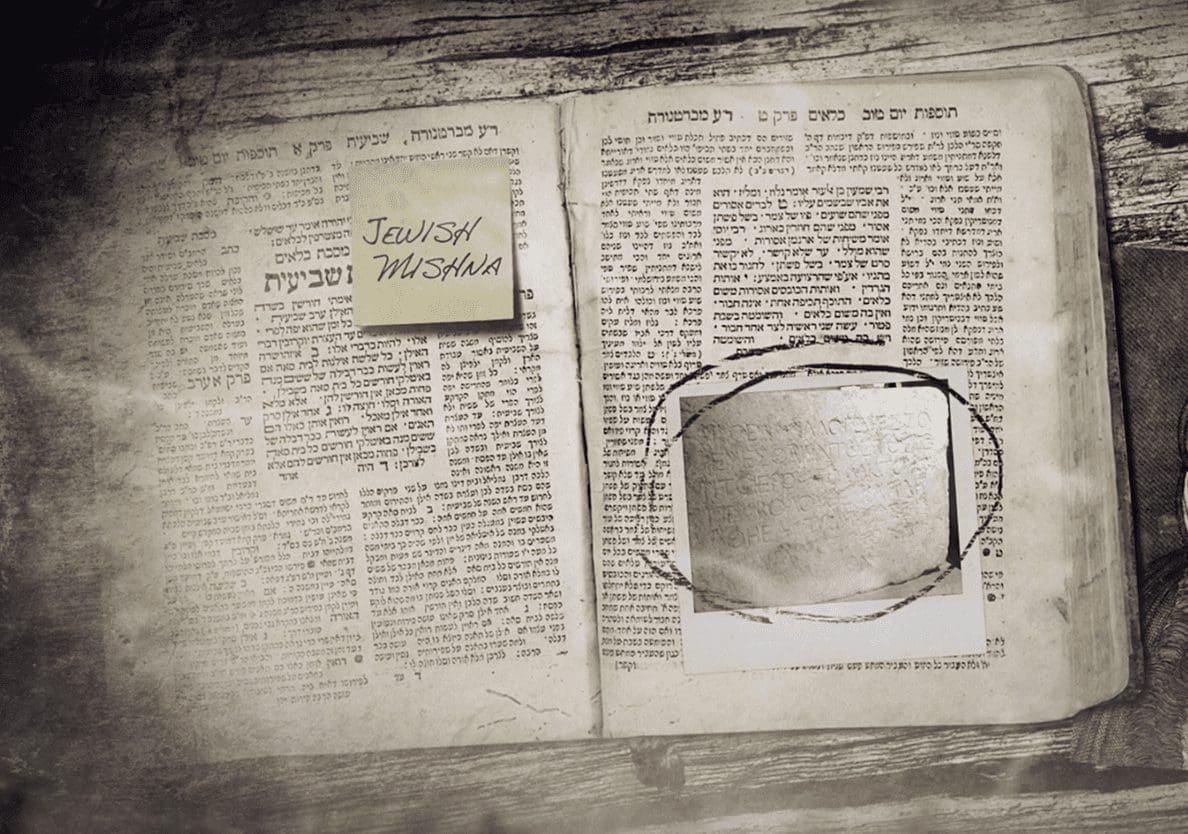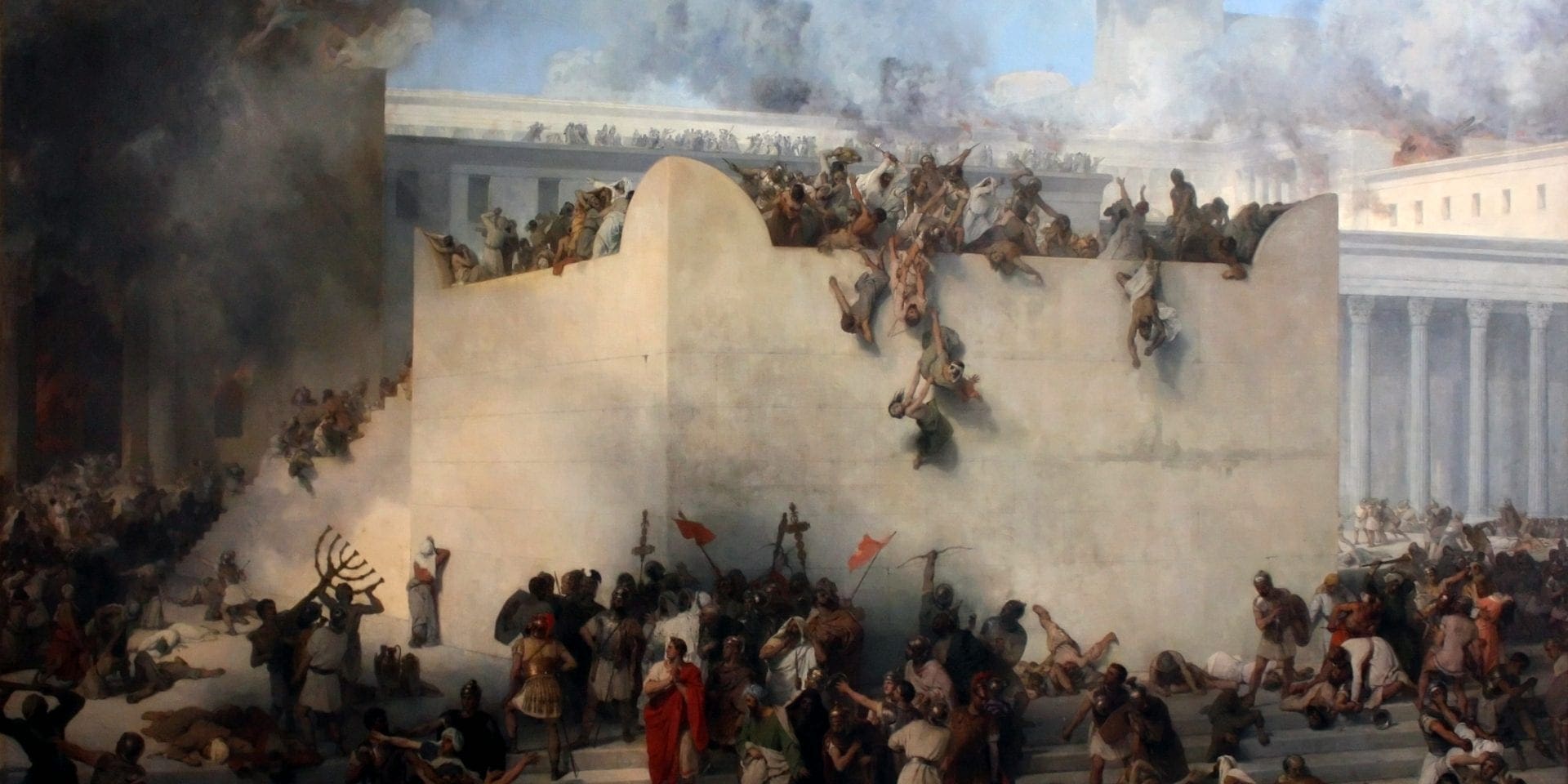The last Jewish Temple to stand on the Temple Mount in Jerusalem was destroyed in AD70 by the Roman military as a response to a rebellion of the people. The Temple and Temple complex that was destroyed was the one that features on the pages of the New Testament.
Herod the Great had begun renovations to the complex around 19BC, and according to the stories that have passed down through history it was Herod’s crowning achievement, unrivalled in beauty. Today we have more than just stories.
“[O]pen court was from end to end variegated with paving of all manner of stones.”
Flavius Josephus
In 2016, archaeologists working with the Temple Mount Sifting Project announced that they had reconstructed colourful tile work that once paved the floor of the Temple complex. In opus sectile style (latin for “cut work”), these geometrically arranged tiles utilized imported stones of varying types and colour, and often incorporated what has become known as “Herod’s triangle” a type of triangle that Herod used as a sort of style signature.[1] First century historian Josephus claimed that the Temple Complex’s, “….open court was from end to end variegated with paving of all manner of stones” (Josephus, War, 5.192-193).

Opus sectile stylized tiles known as “Herod’s triangle”.
A very small sundial (roughly 2 square inches) was also recovered in 1972 during excavations just south of the Temple Mount.[2] The sundial was discovered in ancient debris from the destruction of the Temple and features a carved menorah on its back, and is computed to tell time in Jerusalem; the back also features two indentations that tell historians it was mounted somewhere in the Temple Complex, to keep its time-telling accurate.[3]


Another key find from the remains of the Jerusalem Temple still retains its warning. Two copies of the Temple’s Gentile boundary signs have been found. In 1871 and then in 1935, the stones were found in secondary use, and still boast their Greek inscriptions warning Gentiles to go no further. The Jewish Mishna tells of a 3-foot high wall that was built in Herod’s Temple complex marking a sacred area that Gentiles were not allowed to breech, and the historian Josephus also adds that there were warnings posted along the wall[4], two of which, no doubt, have now been found.

Corie Bobechko is a daily co-host, speaker, and writer of Bible Discovery. She also hosts a YouTube channel that shows how history and archaeology prove the Bible. Her heart for seekers and skeptics has led her to seek truth and share it with others. Corie also has a Bachelor of Theology from Canada Christian College.
[1]Frankie Snyder, Gabriel Barkay and Zachi Dvira. What the Temple Mount Floor Looked Like. Biblical Archaeology Review, November/December 2016.
https://www.biblicalarchaeology.org/daily/biblical-sites-places/temple-at-jerusalem/what-the-temple-mount-floor-looked-like/#note03
[2] Abraham Levy. Bad Timing. Biblical Archaeology Review 24:4, July/August 1998.
https://members.bib-arch.org/biblical-archaeology-review/24/4/5
[3] Ibid.
[4] Ilan Ben Zion. Ancient Temple Mount ‘warning’ stone is the closest thing we have to the Temple’. Times of Israel, 22 October 2015.
https://www.timesofisrael.com/ancient-temple-mount-warning-stone-is-closest-thing-we-have-to-the-temple/






